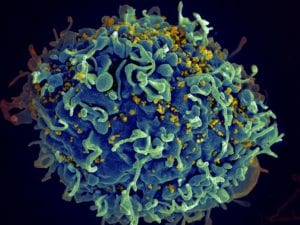Did The Common Pigeon Bring An AIDS-Defining Fungus To Asia?
New research has shed light on the origins of a fungal infection which is one of the major causes of death from AIDS-related illnesses that pigeon may bring.
AsianScientist (May 4, 2011) – New research has shed light on the origins of a fungal infection which is one of the major causes of death from AIDS-related illnesses. The study, published yesterday in the journal PLoS Pathogens, shows how the more virulent forms of Cryptococcus neoformans evolved and spread out of Africa and into Asia. C. neoformans is a highly pathogenic fungi which causes life-threatening infections in immunocompromised humans.
The fungus mainly lives in decaying pigeon or chicken droppings and enters the human host through the respiratory tract. The spores spread to extrapulmonary tissues and the central nervous system where it causes meningitis. A particularly virulent form, C. neoformans variety grubii (Cng), is a major cause of death among HIV-AIDS infected patients.
Up to 1 million cases of cryptococcal meningitis that result in over 600,000 deaths are reported each year. Cryptococcal meningitis affects nearly 20 percent of HIV-AIDS patients in Thailand, where HIV-AIDS is an emerging epidemic.
Researchers from the U.K., Netherlands, and Naresuan University in Thailand took 183 clinical samples in Thailand and compared them with the global database of 77 isolates. Genetic sequencing revealed that the Thailand samples taken from 11 provinces were highly homogenous. In comparison with the rest of the world’s population of Cng, specifically Africa where most of the lineages are found, the strains in Thailand had significantly less genetic diversity.
Analyses on the origin of Thailand’s strain dated it back to an ancestral African population diverging within the last 7,000 years. The common pigeon, domesticated 5,000 years ago, is thought to have spread the pathogen through its excrements when it was introduced to Europe. Subsequent voyages from Europe to Asia 500 years ago may have allowed Cng to broaden its ecological range.
The article can be found at: Simwami SP et al. (2011) Low Diversity Cryptococcus neoformans Variety grubii Multilocus Sequence Types from Thailand Are Consistent with an Ancestral African Origin. ——
Source: Biotechnology and Biological Sciences Research Council.
At Pigeon Patrol, we manufacture and offer a variety of bird deterrents, ranging from Ultra-flex Bird Spikes with UV protection, Bird Netting, 4-S Gel and the best Ultrasonic and audible sound devices on the market today.
Contact us at 1- 877– 4– NO-BIRD, (604) 585-9279 or visit our website at www.pigeonpatrol.ca
Bird Gone, Pigeon Gone, Seagull Gone, Pigeon issue, pigeon spikes, 1-877-4NO-BIRD, 4-S Gel, Bird Control, Pigeon Control, bird repellent, Bird Spikes, sonic bird repellent, stainless steel bird spikes, bird spikes Vancouver, Ultra Sonic Bird Control, Bird Netting, Plastic Bird Spikes, Canada bird spike deterrents, Pigeon Pests, B Gone Pigeon, Pigeon Patrol, pest controller, pest control operator, pest control technician, Pigeon Control Products, humane pigeon spikes, pigeon deterrents, pigeon traps, Pigeon repellents, Sound & Laser Deterrents, wildlife control, raccoon, skunk, squirrel deterrent, De-Fence Spikes, Dragons Den, Canada bird spikes, Canada pigeon, pigeon control, pigeon patrol, pigeon. Kill pigeons, crow, starling
